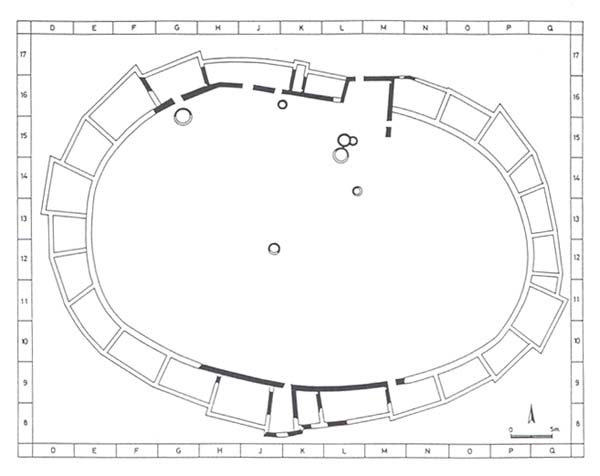Image Details

Israel Finkelstein, The Archaeology of the Israelite Settlement, Israel Exploration Society
Drawing the wagons into a circle. The plan shows excavated areas of ‘Izbet Sartah stratum III (late 13th century to the first half of the 11th century B.C.E.) in black; white represents structures conjectured by archaeologist Israel Finkelstein to have been present at the time. Finkelstein believes that the settlement’s houses were built in a circle, much the way the Bedouin arrange their tents when encamping or—to stretch the analogy—the way pioneers on the American frontier circled their wagons for protection against marauders. In Finkelstein’s view, the inhabitants of ‘Izbet Sartah stratum III were pastoral nomads in the process of settling down. He identifies these people as early Israelites, distinguishable from their Canaanite neighbors by their architecture and by their pottery.
William Dever argues that the late 13th century B.C.E. buildings at ‘Izbet Sartah stratum III may not have been arranged in circular fashion because not enough survived to justify Finkelstein’s reconstruction. Dever sees little basic difference in the material evidence between the people at this site and the undoubted Canaanites at nearby Gezer.
